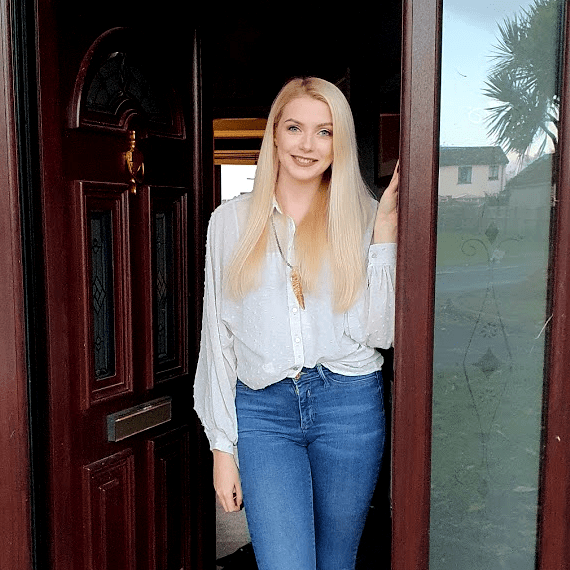In the current economic climate, a mortgage shared with parents is a popular choice made by first-time buyers.
This isn't because we're 'scroungers', 'lazy', and 'have no work ethic' (as many like to paint millennials and Gen Z with that brush). It's actually because the average salary of first-time buyers is “rising much more slowly than costs of housing”, shocker. This means large sums of money are required for property deposits from first-time buyers who on average, can’t match the price right away, or on their own.
This is why mortgage options and deposit schemes are in place. Such as the new Equity Scheme, borrowing a loan from The Bank of Mum and Dad, Offset Loans, and Joint Borrower Sole Proprietor Mortgages (JBSP).
To make the right choice, it’s important to weigh your options and find what works best for you.
Joint Borrower - Sole Proprietor (or JBSP) Mortgages offers a way in which you can achieve the purchase of your home for the first time with some help.
What is a Joint Borrower Sole Proprietor Mortgage?
Imagine a scenario where you are buying with your parents. A Joint Borrower Sole Proprietor Mortgage means that there are x2 borrowers (e.g. your parents and you) but only one of the borrowers is the legally named proprietor.
A Joint Borrower Sole Proprietor (JBSP) Mortgage allows a family member e.g. a parent, to contribute to their child’s mortgage without being a secondary owner of the house or deemed a co-owner.
It also means that when you buy with your parents on a JBSP mortgage, your parents avoid any stamp duty surcharges. (As they aren’t on any property deeds other than their own.)
Parents help to cover the cost of mortgage repayments at the start without being a legally named proprietor in JBSP mortgages. The theory is that the first time buyer grows in their career and can take over the mortgage payments. The parent can reduce the amount they contribute over time.
Why choose a JBSP mortgage?
A Joint Borrower Sole Proprietor mortgage is a repayment option that lets first-time buyers experience feelings of independence and ownership even if they are in a position where they currently cannot afford their mortgage.
JBSP mortgages get first-time buyers onto the property ladder with the help of a joint-borrower e.g. a parent, who covers the cost of mortgage repayments (or a portion of) until the first-time buyer is able to pay these on their own.
The joint-borrower (those who have contributed financially towards mortgage repayments) are flexible to gradually reduce their contribution when the young buyer is ready to cover any repayments.
So, when the first-time buyer can afford their mortgage repayment - the joint borrower is able to back out. This responsibility then falls to the sole proprietor.
Your parent or the joint borrower may ask that you return payments to them when you are in a stable financial position or they may wish to give this to you without expectations of returning, it’s at your discretion - so do discuss this with your borrower if you think this option is for you.
If you’re a first-time buyer, growing your career and earning a sufficient salary, JBSP mortgages could help you make a purchase of a bigger property, in a more sought-after location, sooner than you think! Without help from a joint borrower, this opportunity may be out of the question.
What’s the difference between JBSP Mortgages and other mortgages?
The main difference in mortgages comes down to ownership. Both Joint and JBSP mortgages allow parents to combine efforts with their first time buyer to buy the property, but only JBSP mortgages have the first time buyer’s name solely on the property deeds. This means that parents can avoid stamp duty surcharges by avoiding having their name on an additional property.
Find out what makes Joint Borrower Sole Proprietor mortgages different from Guarantor mortgages and Joint mortgages.
The Difference in JBSP Mortgages and Guarantor Mortgages
In a guarantor mortgage, the parent or allocated guarantor is only liable for mortgage repayments when the first time buyer can’t afford mortgage repayments. Whereas, in a JBSP mortgage, a parent or financial provider commits to paying mortgage contributions from the start.
The Difference in JBSP Mortgages and Joint Mortgages
In a JBSP Mortgage, usually a parent accepts responsibility for making mortgage repayments without rendering legal claim on the property (one proprietor). Whereas, in a Joint Mortgage both borrowing parties (e.g. the friend, relative or family member whom you take out the mortgage with) are responsible for repayments and must cover each other if one party cannot pay. Both parties also have legal ownership clam of the property (joint proprietor).
Risks of Joint Borrower Sole Proprietor Mortgages
As often as we don’t like to admit it, there are potential risks to be mindful of when buying with your parents in a Joint Borrower Sole Proprietor Mortgage.
If the relationship between homeowner and parent happens to break down, removing the non-legal owner from the contract of paying the mortgage may involve a long and potentially expensive legality fight.
Also, financially you should consider the risk that if the owner of the home doesn’t ever pay their mortgage, or give any contribution towards it, the non-owner borrowing party is liable for the repayments.
A final point to consider…
Most times the mortgage lender will want to make sure that the future owner will be able to make the repayments themselves in the foreseeable future and that this responsibility will not permanently lie with the parent.
So if you are in a position where you can expect your finances to grow and with it, your affordability, then Joint Borrower Sole Proprietor mortgages may be the right option for you.
For further advice read related articles here.

